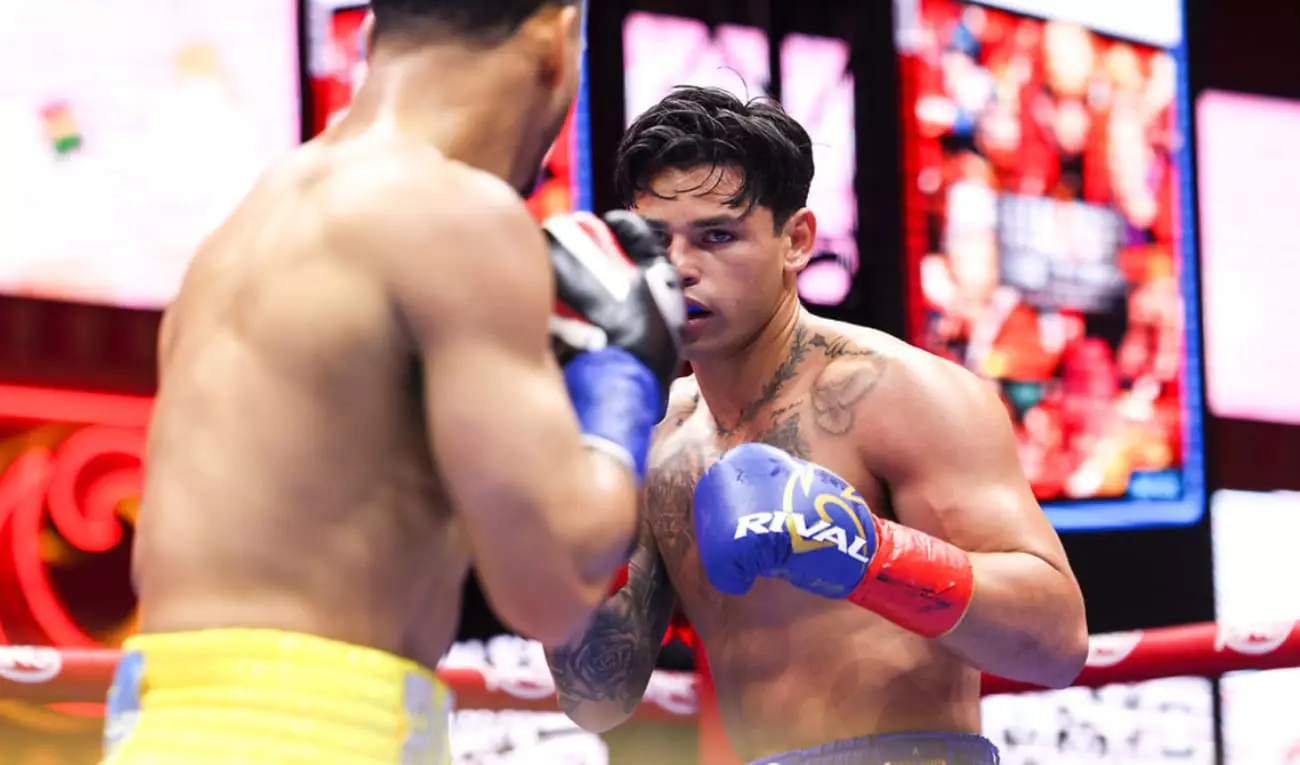In today’s boxing landscape, strategic decision-making often balances financial considerations, fan engagement, and the fighters’ developmental trajectories. Oscar De La Hoya’s recent stance exemplifies a broader shift away from rematches that lack excitement or commercial appeal. His outright disinterest in a Ryan Garcia vs. Rolando ‘Rolly’ Romero rematch underscores a crucial point: not all rematches are created equal, especially when the first encounter failed to ignite the passion of fans or number of viewers. Instead, De La Hoya’s focus on more compelling matchups like Garcia against Teofimo Lopez demonstrates an understanding that fighters and promoters must prioritize marquee fights that generate buzz and revenue, rather than cyclical bouts that risk dampening interest.
This strategic pivot reflects a growing awareness within boxing: the sport thrives on narratives, star power, and high-stakes showdowns. The Romero-Garcia rematch, deemed dull by De La Hoya and seemingly lacking fan enthusiasm, risks being a pointless repetition rather than a meaningful escalation. Promoters and fighters need to recognize that boxing’s vitality depends on engagement, which is cultivated through fights that promise excitement and new challenges rather than predictable rematches.
The Next Big Step for Ryan Garcia: From Contractual Exit to Stellar Matchups
Ryan Garcia stands at a crucial crossroads—facing the end of his current contract with Golden Boy Promotions and contemplating his next move. His expressed desire to “move on” signals a readiness to seek fights that elevate his status, resonate with fans, and test his abilities against top-tier opponents such as Teofimo Lopez. For Garcia, the importance of this phase cannot be overstated; it’s an opportunity to redefine his legacy and ascend to a higher echelon of boxing stardom.
While a rematch with Romero might seem like a convenient or familiar option, it would be a step backward in terms of prestige and excitement. Garcia’s team recognizes that a high-profile fight against Lopez, a fighter with a proven track record and significant fan following, offers far more leverage in terms of pay-per-view sales and career growth. Such a matchup isn’t just a fight; it’s a statement—an assertion that Garcia is targeting the best and intends to leave behind the remnants of his recent struggles and controversies.
The Power Dynamics Behind Fight Negotiations
Negotiating fights in professional boxing involves a complex web of interests, stakes, and personalities. Teofimo Lopez’s recent earnings, such as a notable $10 million purse, highlight his value in the current landscape. Garcıa, earning around $20 million for his last bout, signals his rising star power but also his hunger for even bigger fights. To get Lopez on board, Garcia’s team may need to involve influential figures like Turki Alalshikh, who has a history of facilitating lucrative and high-profile bouts, especially in regions eager to promote Boxing as an international spectacle.
The negotiation process often hinges on perceived value and potential revenue. For Lopez, the promise of a face-off with Garcia—more high-stakes than the Romero rematch—translates to larger paychecks and career-defining moments. For Garcia, stepping into the ring against Lopez isn’t merely a fight; it’s an act of self-assertion, a shot at redemption, and a chance to solidify his place among boxing’s elite.
In summation, the current climate underscores a shift toward smarter, more strategic matchmaking. Fighters and promoters are increasingly aware that meaningful, high-energy bouts are what sustain interest and build legacies. The days of settling for less compelling rematches are fading, replaced by a focus on fights that promise excitement, storytelling, and financial reward. Boxing’s future depends on these choices—facing reality head-on and choosing battles that elevate both the sport and its stars.


Leave a Reply